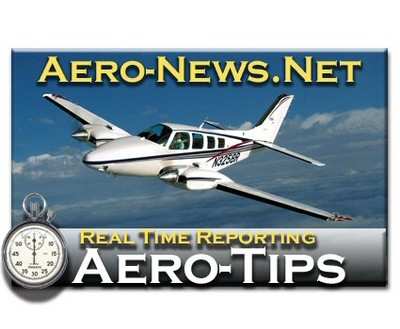Aero-Tips!
A good pilot is always learning -- how many times have you heard
this old standard throughout your flying career? There is no truer
statement in all of flying (well, with the possible exception of
"there are no old, bold pilots.") It's part of what makes aviation
so exciting for all of us... just when you think you've seen it
all, along comes a scenario you've never imagined.

Aero-News has called upon the expertise of Thomas P. Turner,
master CFI and all-around-good-guy, to bring our readers -- and us
-- daily tips to improve our skills as aviators, and as
representatives of the flying community. Some of them, you may have
heard before... but for each of us, there will also be something we
might never have considered before, or something that didn't
"stick" the way it should have the first time we memorized it for
the practical test.
It is our unabashed goal that "Aero-Tips" will help our readers
become better, safer pilots -- as well as introducing our
ground-bound readers to the concepts and principles that keep those
strange aluminum-and-composite contraptions in the air... and allow
them to soar magnificently through it.
Look for our daily Aero-Tips segments, coming each day to you
through the Aero-News Network. Suggestions for future Aero-Tips are
always welcome, as are additions or discussion of each day's tips.
Remember... when it comes to being good pilots, we're all in this
together.
Aero-Tips 01.06.06
A high-performance
single’s cabin door opened immediately following
takeoff. The pilot wisely brought the airplane around and
landed before securing the door. On the second liftoff the
airplane pitched up excessively until it stalled and nosed into the
ground. The pilot did not survive.
Investigation revealed that the airplane’s elevator trim
was set very nose-high, common in this type of airplane when
trimmed for landing but much more nose-up than the safe takeoff
setting. The pilot had apparently not re-set the trim after
his landing to close the door, which contributed to the pitch-up
and stall on the subsequent departure.
How can we prevent this sort of mishap in an instance when we
traditionally do not reference a printed checklist? What
about those multiple landing-and-taxi-backs, stop-and-go landings
or even touch-and-goes we often do for practice and in
training?
I use and teach a mnemonic FLATS as a “taking the
runway” check before takeoff:
- Fuel available and tank firmly selected (Note: Do not
change tanks just before takeoff)
- Flaps set
- Cowl Flaps open
- Lights as required
- Door and window Latches secure
- Avionics set (including transponder)
- Trim set
- Time recorded (for IFR and/or flight plan purposes)
- Seat belts and shoulder harnesses secure
- Switches as required (fuel pump, ice protection,
external lights, etc.)
I use an abbreviated
version of the same mnemonic when clear of the runway after
landing, or during the ground pause on a stop-and-go:
- Flaps up
- Cowl Flaps open
- Lights as required
- Avionics to standby (including transponder)
- Trim set (for the next takeoff)
- Switches as required (fuel pump, ice protection,
external lights, etc.)
Aero-tip of the day: Make and use a
well-practiced procedure for “cleaning up” the aircraft
after landing, and as a last-minute check before taking the runway
for departure.
 Aero-FAQ: Dave Juwel's Aviation Marketing Stories -- ITBOA BNITBOB
Aero-FAQ: Dave Juwel's Aviation Marketing Stories -- ITBOA BNITBOB Airborne 05.19.25: Kolb v Tornados, Philippine Mars, Blackhawk Antler Theft
Airborne 05.19.25: Kolb v Tornados, Philippine Mars, Blackhawk Antler Theft Klyde Morris (05.19.25)
Klyde Morris (05.19.25) Airborne-NextGen 05.20.25: Drone Regs, Zero-Emission Cargo, Door-Dash Drone
Airborne-NextGen 05.20.25: Drone Regs, Zero-Emission Cargo, Door-Dash Drone Airborne Affordable Flyers 05.22.25: RV-15 Finalizing, OSH NOTAM, Kolb v Tornado
Airborne Affordable Flyers 05.22.25: RV-15 Finalizing, OSH NOTAM, Kolb v Tornado



